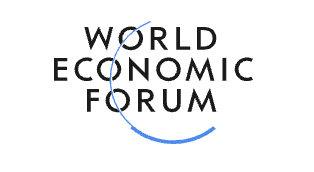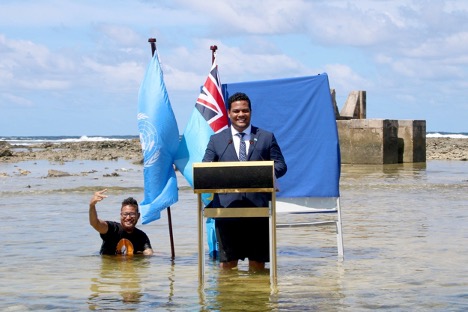The western world, led by the media, is absorbed today with social, economic and political mega problems. Climate change will destroy the world. Migration will destroy societies. Terrorism is rampant. Unstable regimes are threatening war. Social hardships are government’s fault. All will destroy the world.
My comment after a long life, is that the stories that people in the media make up can obviously make more money if they sound sensational. Today the competition in the media is for clicks and views on social media and the more sensational or negative the more attention. In this rush to prominence two things are always forgotten, the importance of facts over feelings and the power of science and technology to provide solutions. I will take just three of these issues to address my point: Climate Change, Migration, and Regional Conflict.
Climate Change:
First, since I am Canadian, lets first look at the big picture. Canada produces 1.5% of Global GHG (Greenhouse Gases). This makes Canada the 11th largest emitter after China, the U.S., India, the E.U., Russia, Brazil, Japan, Iran, Indonesia, and Mexico, who together are responsible for between 60 and 67%. So why is it so important to spend so much effort, when the best you can do is mitigate 1.5% of the problem. This roughly equivalent to stressing over how to save on your daily morning coffee instead of handling your overall family finances. When I took classes in quality in college, I learned that to deal with a significant problem you first identified the significant few and the insignificant many, and then you first addressed the significant causes. I would have failed that class if I had suggested that a problem could be solved by focusing on 1.5% of the problem.
In addition, the climate encompasses the entire globe. Its not like the air over Canada stays only over Canada, and we can clean just our own air. It is like clearing your driveway of snow while its still snowing. You shovel and it comes right back. True, people may feel good if they think they are working for a good cause but feeling good while having no change to affect the outcome is simply madness. Thousands of people march up and down the road protesting against the oil industry, or some pipeline, usually with little or no understanding of the issues they are so set against. I watched an elderly lady in Toronto at a demonstration against Canada’s proposed west to-east oil pipeline. She was asked what the problem was that caused her disagreement. She said that the imported oil from some Arab country that was going west was ‘good oil’ because it was sweet oil, while the Canadian oil that would be going east was ‘bad’ oil because it wasn’t sweet.
The fact is that Sweet Oil or Sweet Crude as defined in the oil industry is simply oil with less sulphur. Less sulphur makes refining slightly easier, but otherwise, oil is oil. Her distinction, no doubt something she had been told but wasn’t really interested enough to check, was meaningless, yet she was out there demonstrating. Doing her bit to fight against a non-fact. Climate change has many facets, the effects of El Nina, and El Neno, ocean current changes, glacial withdrawal, holes in the ozone layer, carbon sinks, deforestation, ocean current changes, jet stream variations, and even polar tilt. And yes human industrialisation How many demonstrators have any idea what these factors are or how each may affect the overall end result. What I hear are a plethora of vastly over simplified talking points from people with a position but zero knowledge. But do you know who does know? Scientists and engineers. The people making a thousand changes every day in thousands of industries, labs, and universities on thousands of products, processes and designs. Some of these people are trying to better understand climate change causes while many others are developing alternative sources of power. Still others are working on solutions to current identified issues through carbon capture, cleaner car engines, more efficient ships and shipping. These are the people who will affect climate change, not social media activists, placard carrying students of network media talking heads. They will do this by creating new products, and new processes, and by changing the ways that things are done. In the 1980s there was an oil shortage. The media then were reporting that by the year 2000 there would be worldwide famine and that northern countries like Canada would freeze in the dark. What they didn’t predict was that small computer chips would be developed for car engines that would make those engines considerably more efficient, creating more power with much less fuel, or that whole new processes would be found for extracting oil from the ground. And they didn’t predict changes in farming methods that considerably increased crop yields, or the introduction of previously ignored supper grains. These changes came from Engineers and Scientists, not ‘head in the clouds’ activists looking for magic solutions, eager to criticize, but not interested in thinking. Let me be perfectly clear here. I’m not anti-climate change, I am not a climate denier. I want cleaner air for my grandkids and I want them safe from the negative effects of global warming, but I also understand the responsibility of government is to create an environment for change and not to dictate it. When the government tells people how to act, that is totalitarianism, not democracy. If the people want change they will get it. Scientists and engineers will develop the products, and processes that will fulfill society’s demands
Migration
Most migrants are displaced by war, rebellion, social or political unrest. Often these problems can cause famine or other social hardships as byproducts. In nearly all cases, the people being displaced would be most happy, if they could just live their lives in peace, in their homes. The world has created the United Nations, The European Union, and other alliances that, if their interest was actually peace, could alleviate most if not all of this suffering. Many of the regional conflicts are proxy wars created and supported by larger nations, usually the larger nations with veto power in the U.N. If the UN actually worked as intended these wars should not exist. The first change necessary is for the UN Security Council to be reformed and instead of being controlled by the biggest powers it should be controlled by middle powers with the strongest histories of human rights protection and peace keeping. Countries without Global dominance as a motive.
A New U.N.
I asked Chat GPT to provide the seven countries that should be the UN Security Council, if peace keeping and human rights were the criteria. Here is the answer
If peacefulness, peacekeeping, and human rights were the primary criteria for selecting countries to serve on the UN Security Council, the composition would likely differ significantly from the current system, which is based on political and historical Imperial Power factors. Here’s how it could look, based on those values:
- Sweden – Sweden has long been a leader in promoting peace, human rights, and diplomacy. It is also one of the largest contributors to peacekeeping missions and has consistently ranked highly in human rights indices.
- Norway – Norway is a strong advocate for human rights, peacekeeping, and global stability. It is also known for its work in mediating peace processes, such as the Oslo Accords between Israel and Palestine.
- Canada – Canada is renowned for its commitment to peacekeeping and humanitarian efforts. It has a strong reputation for promoting human rights both domestically and internationally.
- Finland – Finland is another country with a strong human rights record and a reputation for peaceful diplomacy. It is known for its stable society, and it has often mediated peace agreements in conflict zones.
- New Zealand – New Zealand has been a strong proponent of human rights and peacekeeping. It actively supports disarmament initiatives and is recognized for its commitment to international law and peaceful conflict resolution.
- Costa Rica – Costa Rica stands out for its commitment to peace; it abolished its army in 1949 and has since focused on diplomacy and human rights. It has been a consistent advocate for disarmament and peacebuilding efforts.
- Uruguay – Uruguay has a solid record of peacekeeping and is one of the largest contributors to UN peacekeeping missions per capita. It is also known for its strong democratic institutions and respect for human rights.
These countries tend to prioritize diplomacy, human rights, and global stability, and they have a demonstrated commitment to peacekeeping efforts. Of course, the actual composition of the Security Council is shaped by geopolitical considerations. If these countries constituted the UN Security Council while China, France, Russia, the U.K. and the U.S. were not members, there would be a real chance of world peace. True these countries aren’t superpowers, but that is their strength. They would need to deal with root causes and negotiate against interference by powerful countries of which realistically there are only three.
Regional Conflict
Israel and Palestine
One major, long established regional conflict is the Israeli Palestinian conflict. There is no rational argument against a two-state solution to this conflict, but any solution that results in the two as neighbours, living side by side is unlikely to work without significant changes in political will.
One viable alternative would be creation of a new nation, or an expanded nation for the 6 million Palestinians on their current land and part of the Sinai Peninsula of Egypt, or another part of the Sahara. With the right combination of diplomacy, technology, resources, and international cooperation, it could potentially be done. However, it would face Political, Technical and Economic challenges, and would have to be a huge world-wide endeavour. Let’s break this down:
1. Water Resource Development and Irrigation
The key to any desert nation thriving would be water—without it, sustaining a large population and developing infrastructure would be impossible. Here are some possibilities:
Desalination: One option is to desalinate seawater from the Mediterranean Sea or the Atlantic Ocean and bring it inland via pipelines or infrastructure. Desalination technology has advanced significantly in recent years, and the region already has some desalination plants, especially in coastal areas. The challenge, however, is the cost of energy (desalination requires a lot of power), the sustainability of the process, and the logistics of transporting fresh water inland.
Aquifers: Beneath the Sahara are several fossil water aquifers, such as the Nubian Sandstone Aquifer that spans several countries (Libya, Egypt, Sudan, Chad). These aquifers contain ancient water that has been stored underground for thousands of years. The challenge here is that while aquifers can provide a water source, they’re finite, and extracting too much could lead to depletion.
2. Irrigation and Agriculture
Hydroponics and Vertical Farming: With limited arable land, hydroponics (growing plants in water, using minerals) and vertical farming (growing crops in stacked layers in a controlled environment) could be solutions for food production. These techniques have already been used in urban areas and could be adapted for desert conditions.
Center-Pivot Irrigation: If there were reliable access to water, center-pivot irrigation systems could be used to irrigate large swaths of land for agriculture. These systems rotate around a central pivot, allowing efficient use of water for crop production.
Desert Agriculture: There are already examples of desert agriculture, such as date palms, cactus fruits, and some forms of cereal crops in parts of the Sahara. While it would require substantial innovation, technology (like genetically engineered drought-resistant crops) could improve the efficiency of agriculture in desert environments.
3. Energy and Infrastructure
Solar Power: The Sahara receives vast amounts of sunlight and has huge potential for solar energy. With current technology, solar panels could provide the energy needed for desalination, irrigation systems, and other infrastructure. The Sahara could potentially become a solar powerhouse, with energy production not only meeting the country’s needs but also exporting to neighboring regions or even to Europe.
Wind Energy: The Sahara is also a region with substantial wind energy potential, especially along certain corridors, like the Saharan trade winds. These could supplement solar power for a more sustainable energy mix.
Transport and Infrastructure: Developing infrastructure in the Sahara would be a significant challenge. Roads, ports, airports, and housing would need to be built, and the high temperatures and harsh conditions would make construction work difficult. Efficient logistics for transporting water, food, and goods would need to be established.
5. Political and Social Challenges
International Cooperation: Any such project would likely need support from multiple governments in the region and the world. The Sahara spans across several countries, including Algeria, Egypt, Libya, Mali, Mauritania, Niger, and others. Political boundaries, international agreements, and cooperation would be needed to fund and implement such a grand idea.
Land Ownership and Sovereignty: Establishing a new country in the Sahara would involve complex geopolitical issues. These areas are part of existing national territories, so gaining sovereignty or negotiating land rights with the countries that already control the Sahara would be a major hurdle
Cultural and Social Integration: Building a new nation would also require the social integration of diverse groups of people. People from different backgrounds, especially those from surrounding regions or neighboring countries, would need to adapt to living in a desert environment, and a culture of cooperation would be essential.
6. Economic Viability
Initial Investment: The costs of creating an entirely new nation, including all the necessary infrastructure (water systems, housing, agriculture, transportation), would be astronomical. It’s likely that funding from international organizations, foreign investors, or regional governments would be needed to make this a reality
Ongoing Sustainability: The country would need a sustainable economic model. Exporting solar energy, agricultural products, or even minerals (which the Sahara is rich in) could provide income, but the economy would need to be diversified. Special economic zones or trade agreements with neighboring countries might help
Feasibility
In theory, it’s possible to create a nation in the Sahara for 6 million people, but it would require enormous technological advancements, massive investment, and infrastructure development. Key challenges would include ensuring sustainable water supply, developing agriculture without draining resources, creating livable conditions in one of the most hostile climates on Earth, and navigating geopolitical issues with neighbouring countries.
However, if the world were to invest heavily in technologies like solar energy, desalination, and advanced irrigation systems, and if the international community cooperated on such a large-scale project, it could become a possibility. Think of it as a highly ambitious “New Deal” for the desert, but it would likely require a coalition of nations and vast resources—certainly not something that could happen quickly or easily. The solutions are in the hands of scientists, politicians and political scientists, and engineers.
Patrick Ambrose






